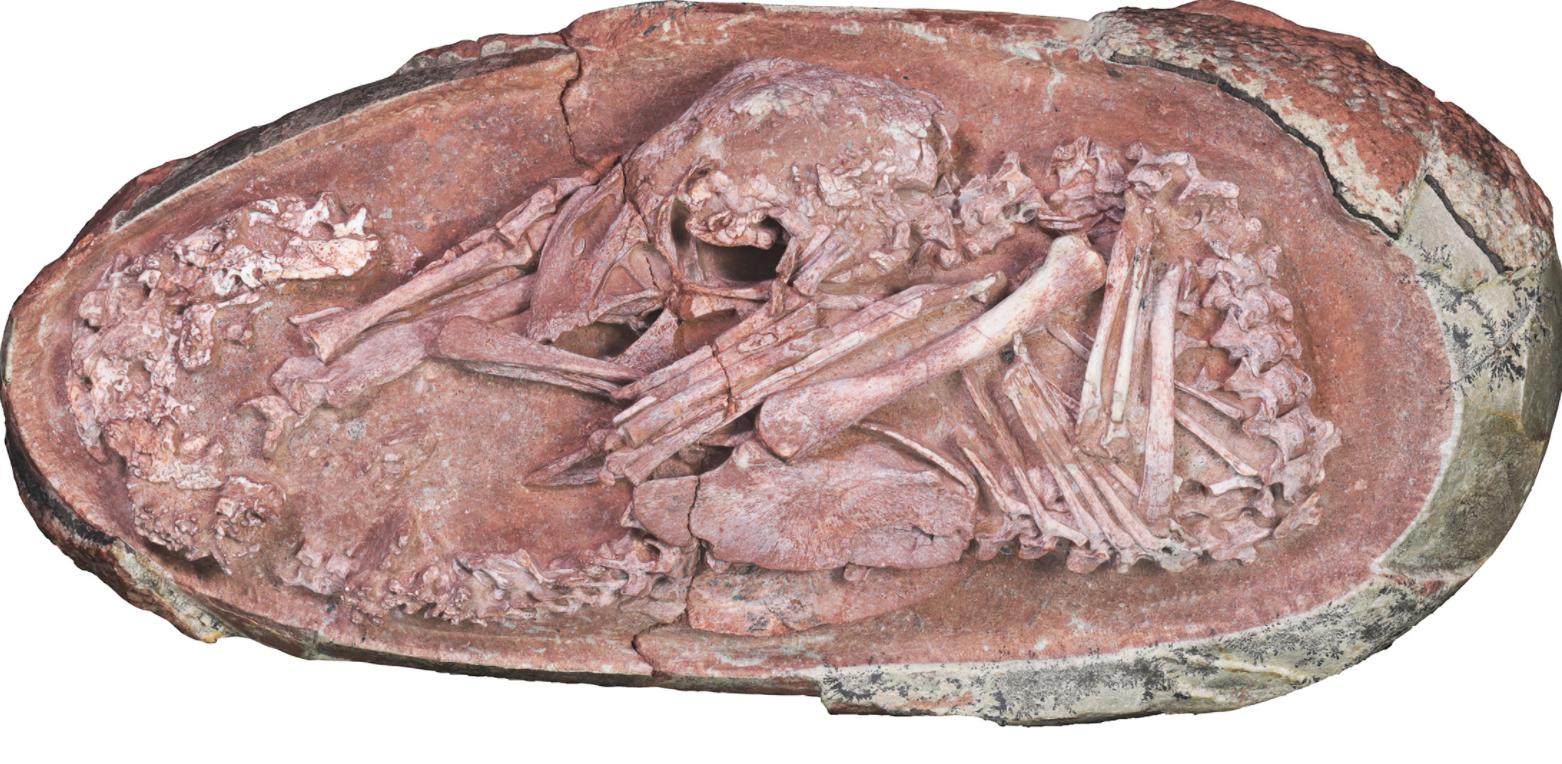A fossilized dinosaur egg unearthed in the city of Ganzhou in southern China has revealed an incredibly well preserved embryo. The embryo, which offers a look at an oviraptorosaur—or “egg thief lizard”—is roughly 72 to 66 million years old. And the way the dino’s curled in its egg looks conspicuously similar to how birds curl up in their own.

A team of researchers led by scientists from the University of Birmingham in the UK and China University of Geosciences in Beijing outlined their findings in a paper published in the journal iScience. In the paper, which comes via Popular Science, the scientists say that in-ovo (or “in the egg”) dinosaur embryos are “remarkably” rare. And that this embryo represents an “exceptionally preserved” specimen from the last 100 years.
Museum staff at the Yingliang Stone Nature History Museum first uncovered the embryo. The museum’s had a storage of dinosaur fossils staff’s been going through since the 2010s. One of which was an egg hiding the below embryo. “Baby Yingliang” is the moniker scientists now use for the little unborn creature.

“Dinosaur embryos are some of the rarest fossils and most of them are incomplete with the bones dislocated,” Fion Waisum Ma, joint first author and PhD researcher at the University of Birmingham, said in a press release. “We are very excited about the discovery of ‘Baby Yingliang’ [as] it is…in a great condition and helps us answer a lot of questions about dinosaur growth and reproduction with it,” the scientist added.
Indeed the scientists say that Baby Yingliang, a feathered dinosaur with three-toed limbs, exhibits pre-hatching behavior that scientists previously considered to be unique to birds. A signal that such pre-hatching behavior may have originated with non-avian dinosaurs. The scientists even say the embryo has a pose similar to that of a chicken in its egg; head below its body, feet on either side and a back curling along the blunt end of the egg.

The scientists will need more embryos to study before they can confirm this “tucking” posture is a precursor to that of modern-day birds. If it is, it highlights the link between the prehistoric species and the now-common flying creatures. Above is an illustration of an (unrelated) type of oviraptorosaur. Based on which we’ll guess the dinosaur’s tucking behavior is most definitely related to that of birds’.